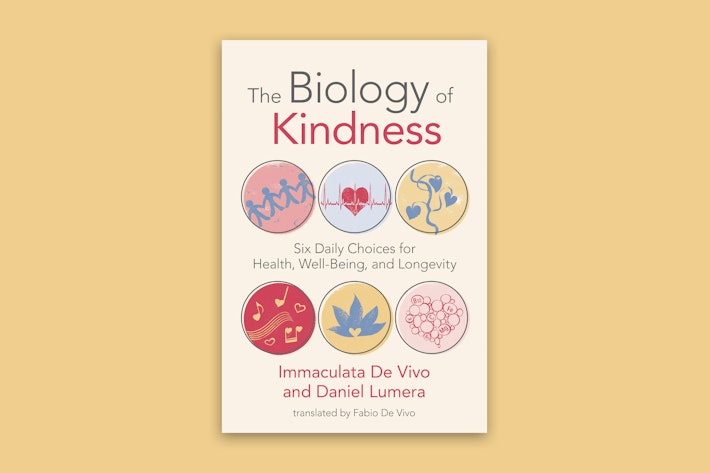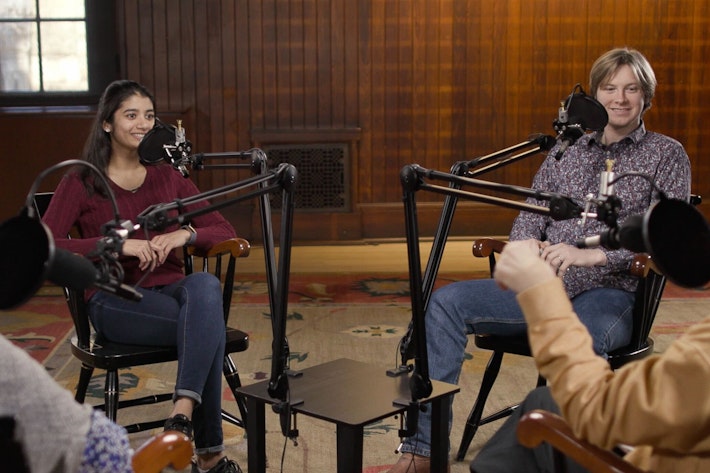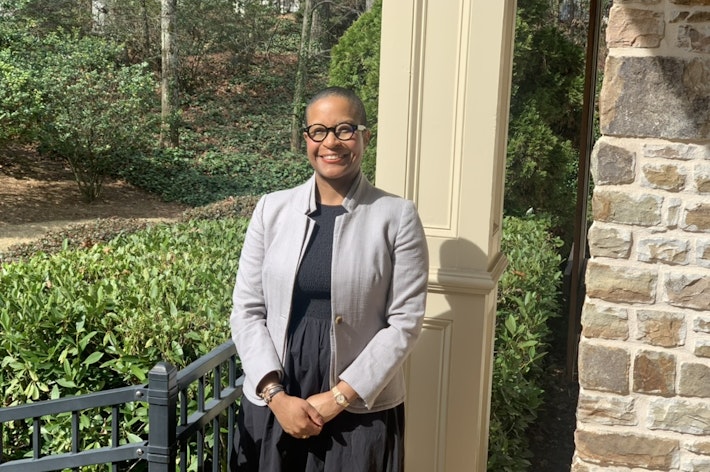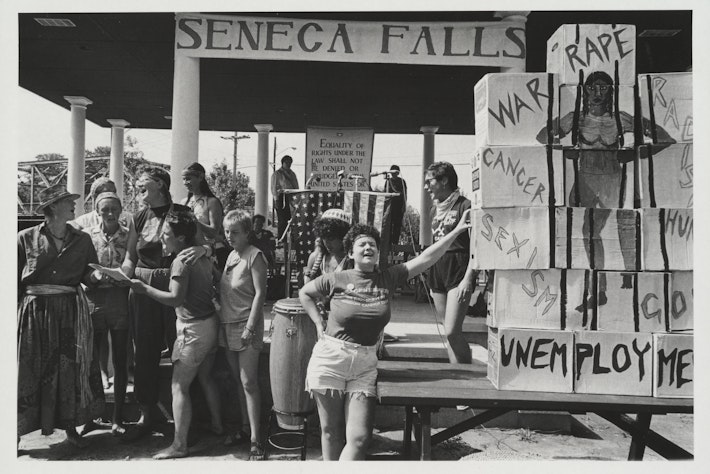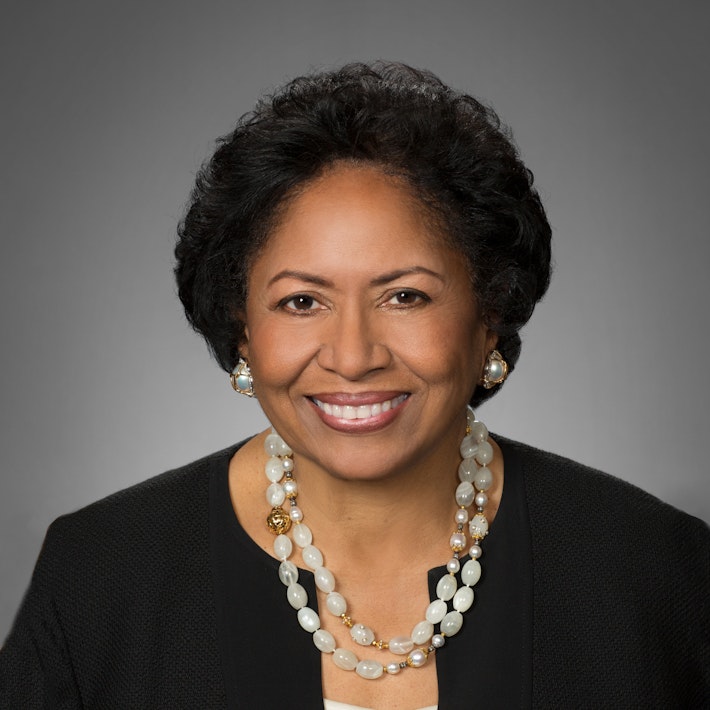Lizabeth Cohen Reflects on Her Years as Dean
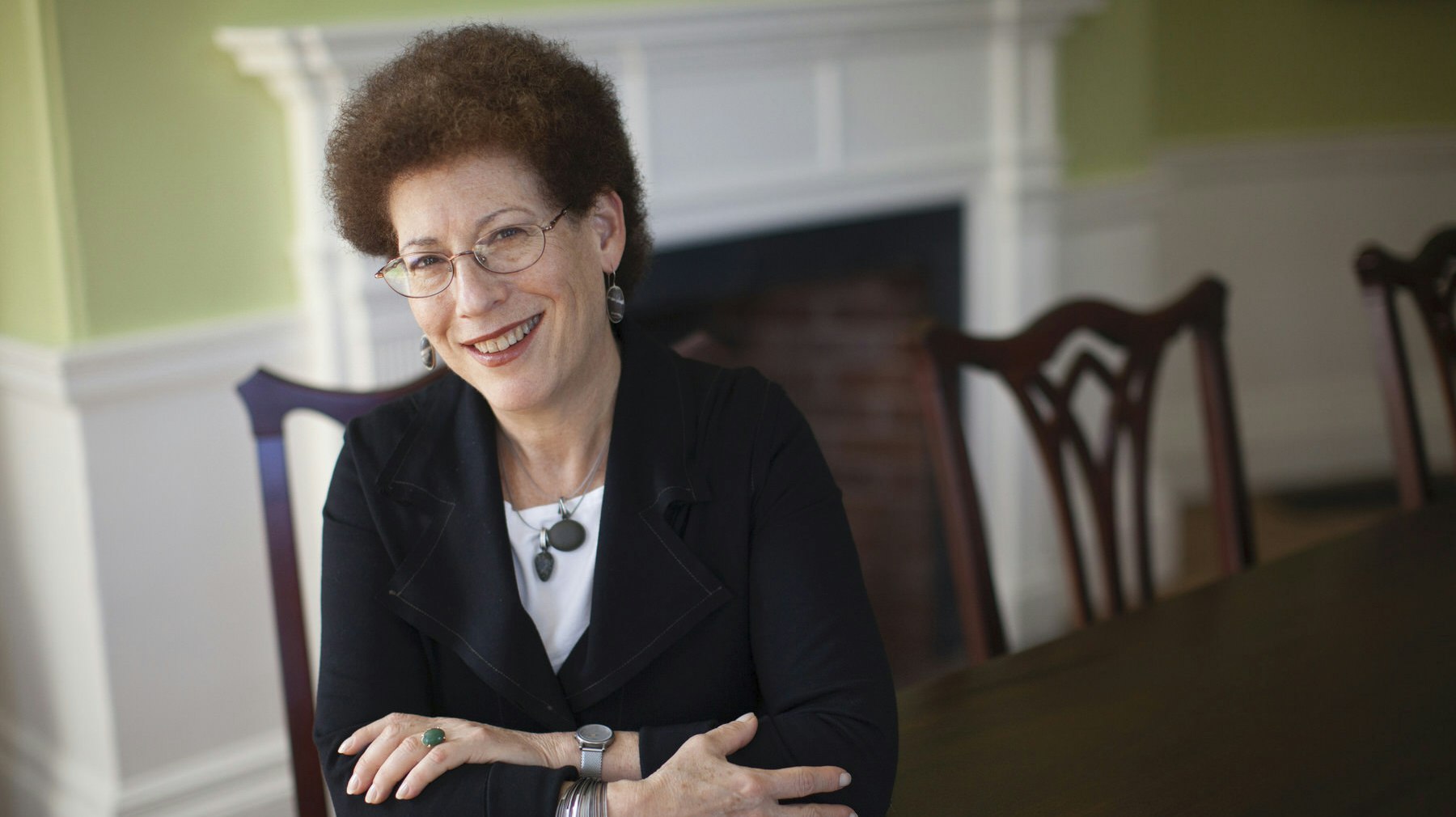
Radcliffe Magazine spoke with Dean Cohen to hear her thoughts about her time as dean and her plans for the future.
In early October, Lizabeth Cohen announced that she will step down as dean of the Radcliffe Institute on June 30, 2018, at the end of her seventh year in the job. Radcliffe Magazine spoke with Dean Cohen in December to hear her thoughts about her time as dean and her plans for the future. We share with you an edited version of that conversation.
Radcliffe Magazine: You have been dean for almost seven years, you were a Radcliffe fellow in 2001–2002, and you have been a professor in the Harvard history department for 20 years. How do you view the evolution of the Radcliffe Institute since its founding, in 1999?
Lizabeth Cohen: Looking back at what’s happened over the past 18 years, I think the Institute has been through an amazing transformation. Maybe because I’m a historian who writes books, I think in chapters. So the founding of the Institute, with Drew Faust as dean, was chapter one. She convened a star panel of advisors to think about what the Institute should be, and then came the takeoff, with programs being created. The Fellowship Program—the core of an institute for advanced study—was the first new program, though it built on the fellowship program that existed at Radcliffe College. The Schlesinger Library, of course, had been around since the 1940s. Public programming, including conferences and dean’s lectures, was a somewhat ad hoc effort at first.
A very early decision was that the Institute would include the sciences. That’s not obvious. It isn’t easy to have science when you don’t have laboratories. But Barbara Grosz joined the Institute in 2001 as the dean of science to make sure that the Institute’s reach would be truly multidisciplinary. She became dean of the Institute in 2007—in what I’m calling chapter two—and led Radcliffe until 2011. Radcliffe’s annual science symposia and science lectures date from this period, and we’ve had many prominent women (and men) scientists as speakers and fellows since then.
You could say that chapter three, the one I’ve had the good fortune to oversee, has been a kind of maturation. We have worked very hard to create an institute that is larger than the sum of its parts—the Fellowship Program, Academic Ventures, and the Schlesinger Library. We’ve done that in several ways, including with our Institute-wide thematic initiatives, which create opportunities for integration across programs. We’ve also engaged a lot more with students, which has really distinguished us among similar institutes for advanced study. And our public programming and support for faculty-led workshops has expanded by leaps and bounds.
Among your achievements as dean, which are you most proud of?
I am very proud of the growth of the Radcliffe Professorships. We have helped to recruit 24 outstanding professors, who will contribute to buildng a more distinguished and diverse Harvard faculty, by offering candidates time at the Institute as fellows. Thanks to support from the current capital campaign, which concludes on June 30, we have been able to attract more and more professors, including tenured and tenure-track faculty members.
I mentioned our thematic initiatives as one way we’ve worked to build a more integrated Institute. Our first theme was Native and Indigenous Peoples, and it was tremendously successful, not only in bringing Radcliffe together, but in what it did for the University. HUNAP [Harvard University Native American Program], has worked hard to make things happen in this area, but at the time we launched our theme, HUNAP’s programming had not yet attracted as much public visibility as it deserved. And Harvard didn’t have one tenured or tenure-track Native American professor. In partnering with HUNAP in 2015–2016, we provided a broader audience for its programs, for Native American studies at Harvard, and for the importance of educating our community about this topic. As a result, at the end of 2016, the Faculty of Arts and Sciences authorized an open-rank faculty position in Native American studies, and the history department has just hired the prominent Indian historian Philip J. Deloria, who arrived in January from the University of Michigan.
The Fellowship Program has become more competitive. In 2011, we had about 850 applicants—a very respectable number—but over the past four years we’ve had between 1,000 and 1,400 every year. And the pool has become more and more diverse in terms of fields, demographics, and international representation.
The capital campaign has also been very successful, allowing us to develop our arts program and to build a gallery; to undertake renovations—first of 40 Concord, which is a valuable annex space for the Schlesinger Library, and now of the Knafel Center and the Schlesinger’s main building; to expand our seminar and workshop offerings; and to enhance our public programming, which includes a new lecture series: the Kim and Judy Davis Dean’s Lecture Series.
The campaign has also brought us new friends, made the Institute more widely known, and sharpened the way we talk about ourselves so that everyone can understand our work. An institute for advanced study requires some explanation. Over the course of the campaign, we’ve gotten better at explaining why it’s so important for people to invest in long-term research. That dual mission we have—to support research and to share it broadly—is rare among institutions in our society, and the role we play is very important.
Tell us about your most memorable moments at Radcliffe.
My first year, the science symposium was titled “Molecules, Movement, and Motors,” and I was told I was supposed to make introductory remarks. I said, “And then I leave?” I was told, “No, you don’t leave. You stay for the whole day.” I was surprised, but it turned out to be fascinating, and I have loved all our science symposia. I’ve learned an enormous amount, and I am happy to sit in that chair all day long!
Another exciting moment was when we opened the new Johnson-Kulukundis Family Gallery with a spectacular exhibition by teamLab. It was a pretty ambitious thing to take on as our opening exhibit, and it allowed us to push the capability of the gallery to its extreme. So we got to see what we could do with demanding audiovisual art. teamLab is a Japanese consortium composed of artists, engineers, and computer scientists. That seemed perfect, because we were trying to create not just an ordinary gallery but one that would be a kind of laboratory for the multidisciplinary work that our fellows do in Byerly Hall.
Your husband, Herrick Chapman, is a history professor at New York University. How is it to be married to another historian?
I can’t imagine not being married to somebody who works in my field. Being a historian is the way I engage with the world, the way I understand things. That’s the way Herrick looks at the world too.
Early on, we both read every draft of everything we wrote, and it was pretty great to have that inside the household. Now I can hear his voice saying things to me, so I don’t have to show him every draft. But we still read for each other. He has a book coming out with Harvard University Press in January, about reconstructing France after the Second World War. He’s worked on it for a long time, and I feel as if I’ve lived it with him. I love that. I wouldn’t trade that for anything.
I feel incredibly lucky to have met him. He was a couple of years ahead of me at Princeton, and I feel that we have grown up together.
What’s next for you?
You get a year of leave after you have served as dean. After a number of years of not being fully active in your field, you need to retool, replenish, and reconnect to your discipline and your scholarly work.
As many people know, I’ve had a book on the back burner for the seven years I’ve been dean, on postwar American cities and urban redevelopment—“Saving America’s Cities: Ed Logue and the Struggle to Renew Urban America in the Suburban Age.” I’ve been able to work on it only in August, at semester break, and at spring break. This is not the way to write a book, because I have to reintroduce myself to it over and over again. I have now managed to finish the last chapter, and I’m working on the conclusion. When I’ve finished it, I will go back and read the whole thing through, editing as needed, because I wrote it in segments, so I have to make it work as a book. I do hope that I can be finished with the manuscript by the end of the summer. I don’t want it to drag into next year, because I have many other things I want to accomplish then.
After I finish the book, I need to read in my field of 20th-century US history. I have to catch up on the most recent interpretations of important historical trends and events, so I have an ambitious reading list of articles and books.
Then I plan to launch a new book project, because when I go back to teaching, I want to have some momentum. It can be very difficult—amid the pressures of teaching, administrative service, and working with graduate students—to actually get a project launched. I also need to think about what I want to teach and how I can contribute the most in my department. I’d like to do some teaching around my new project so that I can create some synergy between my teaching and my research.
What will you miss the most?
Learning about so many different things. I’ll try to come to as many Radcliffe programs as I can, but I know I won’t be able to attend every conference and lecture. The breadth of my experience here at Radcliffe will be very hard to replicate.


